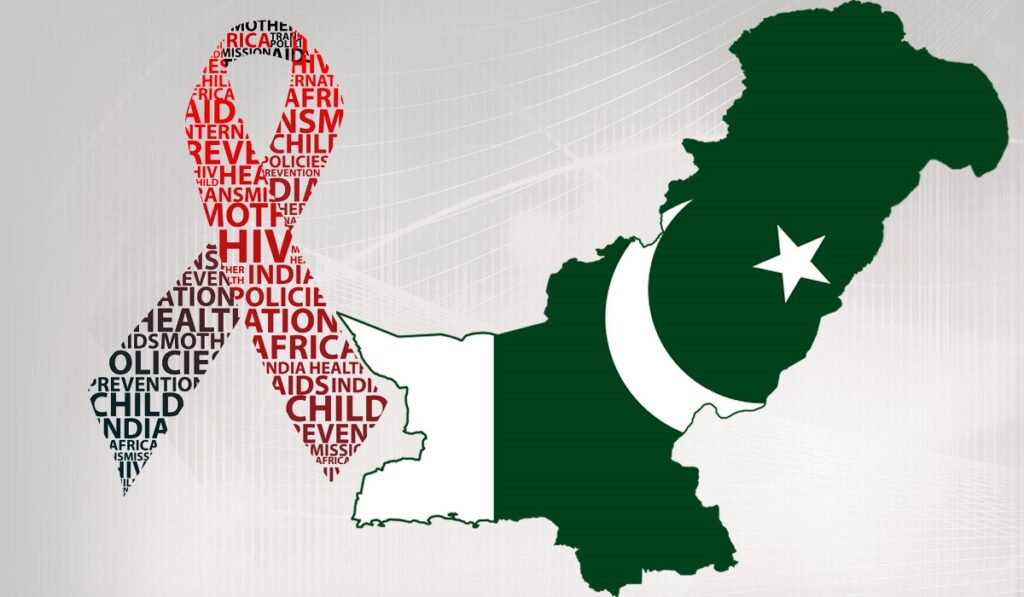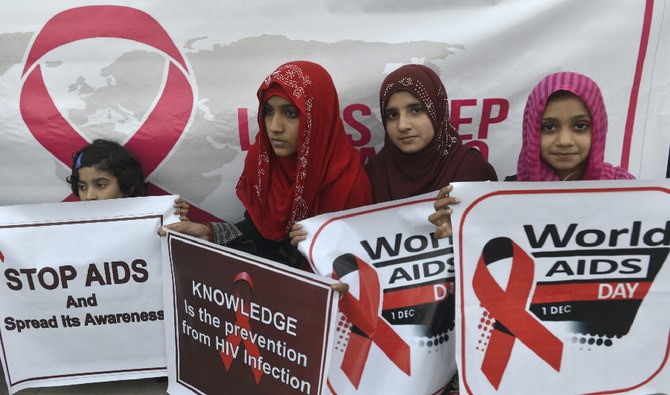
In terms of HIV-AIDS epidemic, Pakistan is the second largest country in South Asia that stands only a few steps behind India and Nepal. The HIV-AIDS in Pakistan is the most serious of infectious disease that challenges public health

Like other developing countries, transmission of HIV-AIDS in Pakistan is increasing as a result of poverty, low literacy, gender-related discrimination, ignorance about modes of transmission and the stigma that prohibits people with risk behaviors from seeking HIV testing or disclosing their HIV positive status
Acquired immunodeficiency syndrome (AIDS) is a chronic, potentially life-threatening condition caused by the human immunodeficiency virus (HIV). It damages our immune system and interferes with your body’s ability to fight infection and disease.
HIV is a sexually transmitted infection (STI). It spreads by contact with infected blood or from mother to child during pregnancy, childbirth or breast-feeding. It may take years to point out AIDS if one is not taking medication properly.
Establishment of HIV/AIDS in Pakistan
In 1987, Pakistan reports first case of HIV-AIDS. National AIDS Control Programe was established in 1986-87. This program focuses on diagnosis of cases that came to hospitals. But progressively began to shift towards a community focus.
Prevalence ratio of HIV/AIDS in Pakistan
UNAIDS Pakistan has estimated that there are 183,705 people living with HIV (PLHIV). Although prevalence rate among general population is less than 0.1%. Of those estimated, 69% are male and 21% female; 3% are percent children. However HIV epidemic is expanding in key populations namely: people who inject drugs (PWID), male, female and transgender sex workers (MSW, FSW & TGSW), men who have sex with men (MSM) and transgenders.
Progression rate according to cities of Pakistan
Pakistan modelling exercise conducted in April 2019 estimated to have the highest number of PLHIV in Punjab followed by Sindh. Together these two provinces accounted for 91% of the total number of PLHIV. The city of Karachi has the highest number of PLHIV followed by Faisalabad and Lahore.

How it spreads
- By having unprotected sex
- By sharing contaminated needles
- Receiving unsafe injections, blood transfusions, tissues transfusions
- During pregnancy or delivery or through breast-feeding
- experiencing accidental needle stick injuries
Signs and symptoms
The symptoms of HIV depends on the stage of infection. Most of the people are unaware of their status until the later stages. In the first few weeks after initial contact, people may experience no symptoms at all or mild illness. The mild illness includes fever, headache, rash or sore throat.
As the immune system weakens progressively after being infected, they can develop other signs and symptoms, such as
- swollen lymph nodes
- weight loss
- fever
- diarrhea
- cough
Without treatment, they could also develop severe illnesses such as tuberculosis (TB), cryptococcal meningitis, severe bacterial infections, and cancers such as lymphomas and Kaposi’s sarcoma.
Prevention
Pakistan has an established prevention programming model for PWIDs in over 40 cities of the country. The entire prevention programme output arrangements are based on community-based programming with the active involvement of key populations CBOs.
WHO points out following approaches to minimize risks of HIV :
- male and female condom use;
- testing and counselling for HIV and STIs;
- testing and counselling for linkages to tuberculosis (TB) care;
- voluntary medical male circumcision (VMMC);
- use of antiretroviral drugs (ARVs) for prevention;
- harm reduction for people who inject and use drugs; and
- Elimination of mother-to-child transmission of HIV.
Treatment of HIV/AIDS in Pakistan
HIV/AIDS is untreatable however, it can be managed in some way.
Authorities in Pakistan started three year antiretroviral treatment program and for this purpose drugs are being imported from India. Four treatment centers are currently established in country, in Islamabad, Peshawar, Lahore, and Karachi. This program is providing treatment to 8000 infected people at the five centers. Only public hospitals are providing this treatment to patients. So far, these centers register about 100 patients overall.
Current antiretroviral therapy (ART) does not cure HIV infection but highly suppresses viral replication within a person’s body and allows an individual’s immune system recovery to strengthen and regain the capacity to fight off opportunistic infections and some cancers.
According to a doctor at one of the centers, the centers are holding counselling sessions with the patients and their relatives. “We tell them don’t hate AIDS patients; that we treat them as human beings,” he said.

[…] Also Read: HIV-AIDS in Pakistan […]